Summer Semester 2023
A joint seminar of the section Systematics, Biodiversity & Evolution of Plants, the Botanische Staatssammlung München and the Botanical Garden München-Nymphenburg
Program
19 April 2023: Dr. John Clarke. Department of Earth and Environmental Sciences, Palaeontology & Geobiology, LMU Munich, Germany.

Host: Prof. Dr. Gudrun Kadereit
26 April 2023: Dr. Fatemeh Ghaderiardakani. Institute for Inorganic and Analytical Chemistry, Friedrich Schiller University Jena, Germany.
Three become one in a tripartite community: Reassessing the collaborative adaptation of Ulva (Chlorophyta) and its microbiome to cold temperatures in Antarctica
Chemical communication using infochemical-mediated strategies plays an essential role in ecological interactions in marine ecosystem. These chemical signals in algal–bacterial interaction are not still completely known but given that bacteria release algal growth- and morphogenesis-promoting factors (AGMPFs) required for (green) macroalgae growth and development, adaptive responses to environmental stressors must be considered within the community structure.
To evaluate the contribution of macroalgae and its microbiome to various stress factors particularly temperature, the reductionistic model system of the tripartite community formed by U. mutabilis and its two essential bacteria, Roseovarius sp. strain MS2 and Maribacter sp. strain MS6, which release all essential AGMPFs, was investigated. This analysis will let us to determine the stress response of each algal and bacterial symbionts within this cross-kingdom interactions and will help to understand the ecological success of Ulva.
I will present the morphogenetic effect of recently isolated bacteria from Potter Cove, King George Island (Isla 25 de Mayo) in Antarctica, on the model system U. mutabilis Føyn starting with axenic gametes. The results indicate that cold-adapted bacteria release sufficient amounts of AGMPFs, inducing cell differentiation, and cell division in axenic cultures. In particular, metabolite profiling of polar low molecular weight compounds revealed insights into the species-dependent cold stress response of the green seaweed holobiont Ulva (Chlorophyta).
Integrating the chemical ecology to aquatic-microbiome investigations will allow us to further explore underlying adaptation and acclimation mechanisms in macroalgae to stress situations.
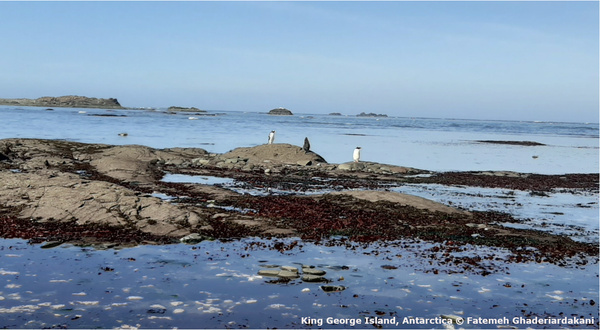
Host: Dr. Andreas Beck
03 May 2023: Prof. Dr. Markus A. Koch. COS Universität Heidelberg, Germany.
Evolution at the dry limits - tillandsiales in the hyperarid Atacama Desert
Epiarenic (sand-growing) Tillandsia vegetation in the hyperarid and arid region of the Chilean-Peruvian Atacama Desert represents an extreme case of adaptation in plant species-poor ecosystems. The involved species exist at the limit of terrestrial life and form mono/oligo-specific and very characteristic structures within the landscape. Covering thousands of square kilometers they represent the major carbon sink in the hyperarid Atacama core. The various Tillandsia species and respective vegetation may have evolved and adapted independently to this extreme environment in various ways. The most abundant vicariant diploid species are T. landbeckii in Chile and T. purpurea in Peru. Spatio-temporally varying distribution range overlaps may have caused adaptive gene flow between different species leading to present day gene pools and inter-species gene flow crossing even ploidy levels. This mechanism highlights a strategy to evolve and adapt more rapidly to environmental changes in extreme arid and hyperarid habitats, and provides an opportunity for Tillandsia populations to efficiently conserve new genotypes via subsequent clonal propagation.
Tillandsia
Host: Prof. Dr. Gudrun Kadereit
10 May 2023: Dr. Robert Lücking. Botanischer Garten und Botanisches Museum, Freie Universität Berlin, Germany.
Foliicolous lichens and the phyllosphere: a microcosmos in tropical rain forests
Foliicolous lichens inhabit the surface of living leaves of vascular plants. Together with bryophytes (mostly liverworts of the family Lejeuneaceae), green algae (predominantly Trentepohliaceae), cyanobacteria (chiefly Scytonema), superficial fungi (e.g., Microthyriaceae), bacteria, and invertebrates (psocids, mites, insect larvae, nematodes), they constitute the phyllospere, a diverse miniature ecosystem best developed in tropical rain forests. Notable features of foliicolous lichens include their short life cycles, in combination with often diminutive thalli, fixed to the substrate by a thin layer of mucilage, as well as specialized reproductive structures, such as hyphophores, campylidia, and disc-shaped isidia. Many species are believed to be widely and even pantropically distributed, presumably reflecting long-distance dispersal or high phylogenetic age. However, molecular phylogenetic studies suggest a high level of endemism and a high degree of cryptic speciation, such as in the families Gomphillaceae (e.g., Gyalectidium) and Strigulaceae (e.g., Strigula). There is a strong decline of species richness with increasing altitude and seasonality, most taxa being confined to lowland rain forests. A single leaf the size of a hand may support up to 50 species and more than 300 species may occur within a single locality. This impressive small-scale diversity, together with the high community dynamics, provide an excellent model to investigate mechanisms that maintain high small scale diversity in tropical ecosystems, such the Huston-Connell intermediate disturbance model and density-dependent feedback interactions. Within the rain forest, three associations of foliicolous lichens can be distinguished: in the shady understory, in natural light gaps, and in the canopy. The nature of the phorophyte has little influence on species composition but affects diversity. Closely related species, such as in the genus Mazosia, are often ecologically equivalent and co-occur side-by-side on the same leaves, a phenonemon possibly explained by an evolutionary species pump mechanisms. Due to their sensitivity to abiotic factors and environmental changes, foliicolous lichens can be used to indicate microclimatic parameters, as well as the degree of disturbance of a rain forest site. Species of certain genera, such as Badimia, are excellent indicators of well-preserved rain forest.
Host: Prof. Dr. Silke Werth
17 May 2023: Dr. Nicolai M. Nürk. Biogeography lab, BayCEER, University of Bayreuth, Germany.
What is diversification and how should we study it?
Two fundamental macroevolutionary processes affect the dramatic differences in biodiversity on Earth: Diversification within and dispersal between areas. Mutation, recombination, and genetic drift contribute at microevolution scales and depend on demographic, ecological, and geographic settings. Today, evolutionary processes can be studied within phylogenetic frameworks in great detail. Current findings on model congruence, however, raised concerns about the general identifiability of most fundamental evolutionary parameters, such as the rates of speciation and extinction. I will discuss existing approaches to studying species diversification in flowering plants, using empirical working examples of how combined information on ecology, geography, and phylogeny can be used to infer basic principles of species evolution.

Host: Dr. Diego Morales-Briones
24 May 2023: Dr. Karol Krak. Czech University of Life Sciences, Prague, Czech Republic.
Molecular phylogeny and evolutionary trends in Chenopodium album aggregate
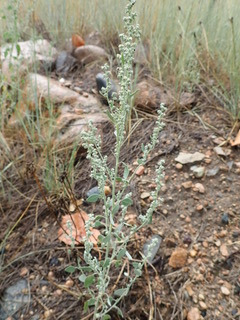 The genus Chenopodium L. s. lat., comprises approximately 150 species distributed worldwide. Some of these species, especially those belonging to the C. album agg. represent vigorous weeds and one of the most widespread synanthropic plants on Earth. The C. album agg. represents a taxonomically extremely challenging group composed of many, only weakly differentiated and morphologically overlapping entities with wide distributions and high levels of phenotypic plasticity. The group represents a diploid-polyploid complex with diploid, tetraploid, hexaploid and decaploid taxa.
The genus Chenopodium L. s. lat., comprises approximately 150 species distributed worldwide. Some of these species, especially those belonging to the C. album agg. represent vigorous weeds and one of the most widespread synanthropic plants on Earth. The C. album agg. represents a taxonomically extremely challenging group composed of many, only weakly differentiated and morphologically overlapping entities with wide distributions and high levels of phenotypic plasticity. The group represents a diploid-polyploid complex with diploid, tetraploid, hexaploid and decaploid taxa.
To elucidate the evolutionary relationships within the group and identify the origins of allopolyploids we applied a wide range of cytogenetic (chromosome counting, flow-cytometry, fluorescent in situ hybridization), molecular (sequencing of cpDNA, ITS, cloning of low-copy nuclear genes) and phylogenomic (HybSeq) approaches on Eurasian and North American representatives of the group.
The following evolutionary scheme was inferred. The C. album agg. is composed of eight major evolutionary lineages. Five of them are represented by extant diploid taxa and show distinct genome sizes. The remaining three groups do not match any existing diploids and were delimited based on the sequences found in the genomes of polyploids, indicating the involvement of already extinct or so far unsampled lineages. All polyploid species were found to be hybrids between these main lineages. We identified allopolyploids for almost all subgenome combinations in Eurasia, indicating that allopolyploidisation is a major driving force of this group’s evolution, at least in the Old World. Contrarily, only a single subgenome combination was found in American polyploids. Here, the most plausible scenario of diversification involves adaptive radiation and speciation at diploid level.
Host: Dr. Anže Žerdoner Čalasan
07 June 2023: Dr. Alyssa Weinstein. Australian National University, Australia, and Intergovernmental Science-Policy Platform on Biodiversity and Ecosystem Services, Bonn, Germany.
Floral ecotypes in the sexually deceptive Warty Hammer Orchid
Sexually deceptive orchids are unusual among plants in that closely related species typically attract different pollinator species using contrasting blends of floral volatiles. Therefore, intraspecific variation in pollinator attraction may also be underpinned by differences in floral volatiles. Pollinator choice trials revealed the presence of three floral ecotypes within the Warty Hammer Orchid, Drakaea livida, that each attracts a different species of thynnine wasp as a pollinator. Floral ecotypes differed in chemical volatile composition, with a high degree of separation evident in principal coordinate analysis. Some compounds that differed between ecotypes, including pyrazines and (methylthio)phenols, were found to be electrophysiologically active in pollinator antennae. MaxEnt species distribution models revealed that each ecotype has a different predicted geographic range, with small areas of overlap at the range margins. One ecotype is known from just ten populations over a limited geographic area, the majority of which has been cleared for agriculture and urban development. While there was broad overlap between the ecotypes in individual morphological traits, multivariate analysis of morphological traits provided correct assignment of ecotype in 87% of individuals. Using the labellum of pollinated flowers, screening for volatile chemical compounds associated with particular ecotypes returned an even higher correct assignment rate, of 96.5%. Based on differences in pollinator response and floral volatile profile, the ecotypes represent distinct entities and should be treated as such in conservation management. The use of volatiles from the labellum of recently pollinated flowers is an effective way to determine the ecotype of unknown individuals of D. livida, with minimal impact on the flowering plant.
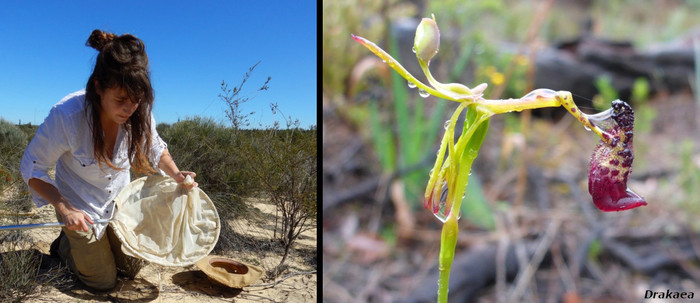
Host: Dr. Elizabeth Joyce
14 June 2023: Dr. Renata Callegari Ferrari. Department of Crop Nutrition and Forest Genetics Department, Georg-August-Universität Göttingen, Germany.
Investigating the alternation between C4 and CAM in Portulaca oleracea
The Portulaca genus is remarkable since all its C4 and C3-C4 intermediate species studied up to date undergo CAM induction upon water deficit. Among those, P. oleracea is a C4-annual cosmopolite usually found growing in human-disturbed areas. It has unresolved taxonomic issues, being defined as a noxious weed to agriculture, but concomitantly used as medicine and food in some countries. During my PhD, we characterized in detail the central genetic machinery involved in both CCMs in P. oleracea, using transcriptome data associated with phylogenetic and physiological analyses. Stems in P. oleracea are C3-performing, and we showed they are ontogenetically induced to CAM. We also explored the morphophysiological plasticity of the species, characterizing CAM in different subspecies originated in different parts of the world. Given the facultative nature of the C4-CAM transition in P. oleracea, a complex regulatory network fine-tuning the expression of each or both CCMs in response to the environmental cues is expected. Therefore, in addition, we investigated the circadian clock mechanisms, hormonal signaling and transcription factors involved in regulating the C4-CAM transition, all of it converging into optimized molecular strategies and protocols to enable the use of P. oleracea as a convenient C4-CAM system. I will provide an overview of the mentioned works, which were developed during my PhD.
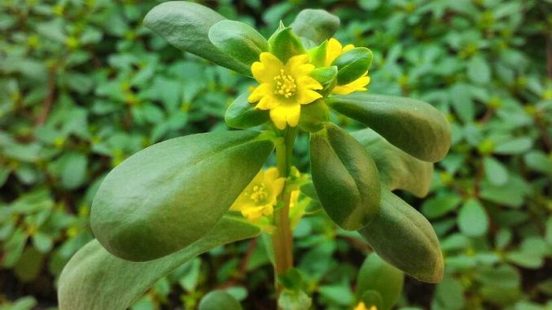
Host: Dr. Christian Siadjeu
28 June 2023 at 3:30pm in the Big lecture hall of the Botanical Institute: Prof. Dr. Jürg Schönenberger. Universität Wien, Vienna, Austria.
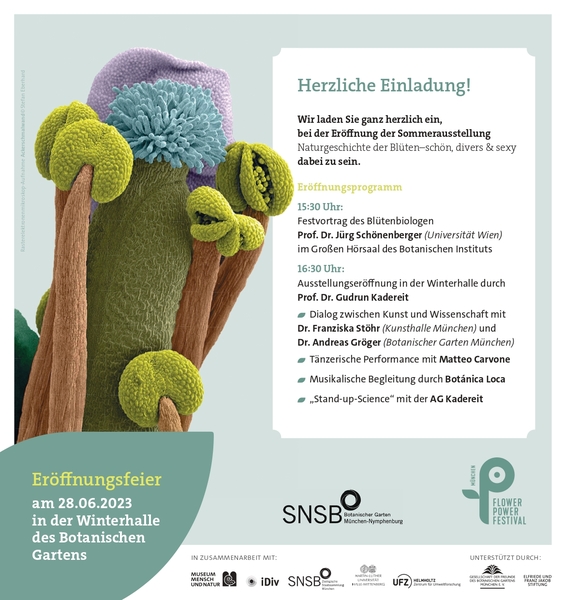
Host: Prof. Dr. Gudrun Kadereit
05 July 2023: Prof. Dr. Hanno Schaefer. TUM Munich, Germany.
Phylogeny and biogeography of the gourd family (Cucurbitaceae) - new results and remaining challenges
With about 1000 species and important crops like cucumber, melon, and pumpkin, the gourd family has long been in the focus of plant systematists around the world and DNA sequence data has become available for most species. While phylogenies based on limited numbers of DNA regions have given us a good general understanding of genus circumscriptions and relationships, the genomic data accumulated in recent years forced us to revise the biogeographical scenarios for Cucurbitaceae and questions the traditional classification, including the composition of the order Cucurbitales. I will discuss some of the consequences of these novel findings and open questions. Using the example of Madagascar, I will further show that there is an urgent need for fieldwork focusing on Cucurbitaceae ecology, especially in Tropical Africa and Asia.
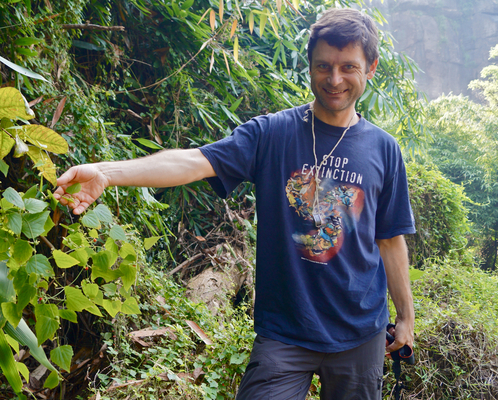
Host: Dr. Marie Claire Veranso-Libalah
12 July 2023: Prof. Dr. Stefan Dötterl. Paris Lodron Universität Salzburg, Salzburg, Austria.
Flower scent: the olfactory communication channel between flowering plants and their pollinators
Most flowering plants are pollinated by animals, and the communication between flowers and their pollinators is an essential first step for pollination to occur in all these plant-insect interactions. Visual (e.g., color) and olfactory (i.e., scent) floral cues are most important for pollinator attraction, but there are large gaps in our understanding of the relative importance of these cues modalities in attracting pollinators and about the specific cues involved (e.g. scent components). Our research aims to decode the communication in mutualistic and parasitic pollination systems across the world, with a focus on floral scent. Recently, we also started to test for climate change effects on the attraction of pollinators to crop plants, and to explore possibilities for using floral scents in sustainable pest control measures.
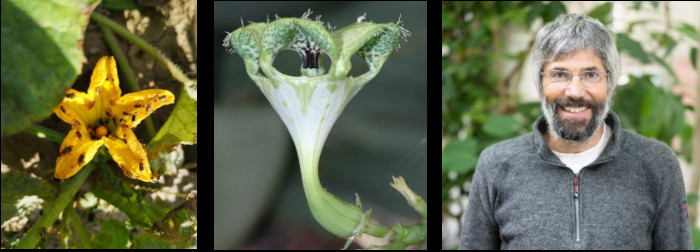
Host: Dr. Simon Pfanzelt
19 July 2023: Dr. Ulrike Bauer. School of Biological Sciences, University of Bristol, England.
Mechanical ecology in plants
Understanding how plants cope with physical challenges in their environment or exploit mechanical mechanisms to their advantage has implications for agriculture, forestry and conservation, and provides inspiration for new biomimetic technologies. My lab uses carnivorous Nepenthes pitcher plants as models to study functional adaptations of leaf surface patterns and material properties. We combine biomechanical lab and field experiments with state-of the art imaging, reverse engineering, and modern -omics approaches to disentangle the structural, topographical and chemical components of pitcher trap function, and unravel the development and evolution of biomechanical adaptations. I will showcase a range of past and present projects in my lab, from the function and development of antiadhesive plant surfaces to the biomechanics and evolution of pitchers that work as geometrical springs.
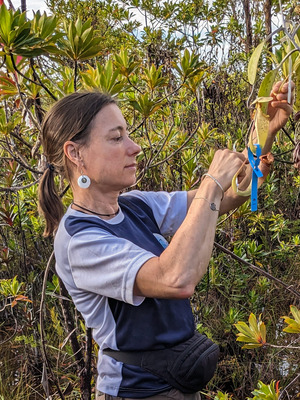
Host: PD. Dr. Andreas Fleischmann
27 July 2023 (Thursday): Dr. Marc Fradera-Soler. Section for Plant Glycobiology, Department of Plant and Environmental Sciences, University of Copenhagen, Denmark.
Characterization and ecophysiological relevance of succulence-related traits in the leaf-succulent genus Crassula, with special reference to glycomics and foliar water uptake
 Succulent plants are drought-resistant plants that store water in specialized tissues, which can be remobilized during drought. Collapsible cell walls in succulent tissues are able to fold in a regular fashion as water is lost, thus preventing irreversible damage and permitting reversible volume changes. Despite the alleged importance of cell wall traits for the succulent syndrome, their ecophysiological significance has long been overlooked. To explore this, we surveyed the leaf polysaccharide and glycoprotein composition in a broad sampling of southern African species of the leaf-succulent genus Crassula (Crassulaceae), and we interpreted its adaptive significance in relation to growth form and arid adaptation. We employed comprehensive microarray polymer profiling (CoMPP), which we complemented with monosaccharide analysis and immunolocalization using glycan-targeting antibodies. We found that compact and non-compact Crassula species occupy distinct phenotypic spaces in terms of leaf glycomics, and that some cell wall components correlate positively with increasing aridity, which suggests that they are likely advantageous in terms of arid adaptation. These differences point to compact Crassula species having more elastic cell walls with plasticizing properties, which can be interpreted as an adaptation towards increased drought resistance. Furthermore, we report for the first time an intracellular pool of AGPs associated with oil bodies and calcium oxalate crystals, which could also be underlying increased drought resistance. A deeper insight into the relationship between cell walls and the succulent function would be particularly useful given the potential of succulents as natural capital to mitigate the effects of climate change.
Succulent plants are drought-resistant plants that store water in specialized tissues, which can be remobilized during drought. Collapsible cell walls in succulent tissues are able to fold in a regular fashion as water is lost, thus preventing irreversible damage and permitting reversible volume changes. Despite the alleged importance of cell wall traits for the succulent syndrome, their ecophysiological significance has long been overlooked. To explore this, we surveyed the leaf polysaccharide and glycoprotein composition in a broad sampling of southern African species of the leaf-succulent genus Crassula (Crassulaceae), and we interpreted its adaptive significance in relation to growth form and arid adaptation. We employed comprehensive microarray polymer profiling (CoMPP), which we complemented with monosaccharide analysis and immunolocalization using glycan-targeting antibodies. We found that compact and non-compact Crassula species occupy distinct phenotypic spaces in terms of leaf glycomics, and that some cell wall components correlate positively with increasing aridity, which suggests that they are likely advantageous in terms of arid adaptation. These differences point to compact Crassula species having more elastic cell walls with plasticizing properties, which can be interpreted as an adaptation towards increased drought resistance. Furthermore, we report for the first time an intracellular pool of AGPs associated with oil bodies and calcium oxalate crystals, which could also be underlying increased drought resistance. A deeper insight into the relationship between cell walls and the succulent function would be particularly useful given the potential of succulents as natural capital to mitigate the effects of climate change.
Another peculiarity of Crassula are the conspicuous hydathodes found in the leaves of most species. Foliar water uptake (FWU) through these hydathodes has long been suspected in Crassula, particularly in species that occur in fog-influenced arid habitats in southern Africa, yet no empirical observations exist in the literature that unequivocally link FWU to these structures. To investigate if FWU is operational in different Crassula species, we used the apoplastic fluorescent tracer Lucifer Yellow in combination with different imaging techniques. Our images confirm that hydathode-mediated FWU does indeed occur in Crassula, and that it is probably widespread across the genus. Hydathodes in Crassula have been evolutionary repurposed as moisture-harvesting structures, besides their more common purpose of guttation. FWU could be induced even in species that do not occur in fog-influenced arid habitats, so that the benefits of water absorption may extend to the whole genus, even to those species occurring in mesic environments. Surprisingly, we did not find a clear link between FWU ability and leaf surface wettability. Instead, the hierarchically sculptured leaf surfaces of several Crassula species may facilitate FWU due to hydrophilic leaf surface microdomains, even in seemingly hydrophobic species. These findings confirm the ecophysiological relevance of FWU in Crassula and reassert the importance of atmospheric humidity for some arid-adapted plant groups.
Host: Prof. Dr. Gudrun Kadereit

